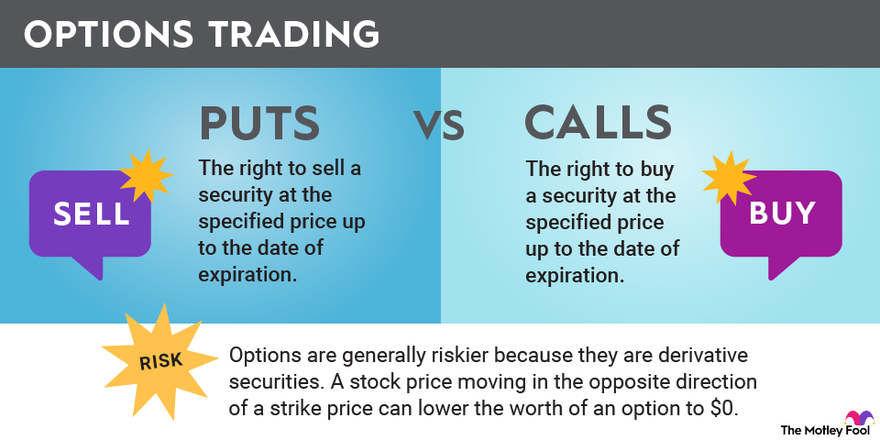Have you ever dreamt of achieving substantial gains in the financial markets, but felt overwhelmed by the intricacies of traditional stock trading? Perhaps you’ve heard whispers about “options” and their potential to amplify both profits and losses. Options trading, often perceived as a complex and risky endeavor, holds the key to unlocking a world of possibilities for astute investors. This guide will demystify the fundamentals of options, empowering you to navigate this exciting yet potentially treacherous landscape.

Image: ar.inspiredpencil.com
Options are contracts that grant the buyer the right, but not the obligation, to buy or sell an underlying asset at a predetermined price (the strike price) within a specified time frame (the expiration date). Think of them as insurance policies or leveraged bets. Understanding the nuances of options will allow you to tailor strategies for a variety of market conditions and risk tolerances, opening doors to both profit and loss amplification.
The Basics of Options Trading
Understanding the core concepts of options trading is crucial before venturing into the market. Let’s break down some key terminology:
Call Options
A call option gives the buyer the right to buy an underlying asset (such as a stock) at a specific price (the strike price) before the expiration date. Think of it as a ticket to purchase a stock at a discounted price, but only if you want to exercise that right.
- Example: You purchase a call option on XYZ stock with a strike price of $50 and an expiration date of June 2024. If the price of XYZ stock rises to $60 before June 2024, you can exercise your option and buy the stock at $50, then immediately sell it in the market for $60, realizing a profit of $10 per share.
Put Options
A put option grants the buyer the right to sell an underlying asset at a specific price (the strike price) before the expiration date. This is like having the ability to sell a stock at a higher price, regardless of the market price.
- Example: You purchase a put option on ABC stock with a strike price of $80 and an expiration date of October 2024. If the price of ABC stock falls to $70 before October 2024, you can exercise your option and sell the stock at $80, even though it’s only worth $70 in the market, making a profit of $10 per share.

Image: capitalflow.info
Types of Options Strategies
The world of options trading extends beyond straightforward buying and selling. Options can be combined in various ways to create sophisticated strategies that cater to different market expectations and risk appetites.
Covered Calls
A covered call involves selling a call option against shares you already own. You profit if the stock price stagnates or drops slightly, but your potential gains are limited to the premium received from selling the call option. If the stock price surges, you’re obligated to sell your shares at the strike price, limiting your profit potential.
Protective Puts
A protective put involves buying a put option on a stock you already own. This strategy acts as insurance, protecting your portfolio against potential losses if the stock price drops below the strike price of the put option.
Straddles and Strangles
Straddles and strangles involve buying both a call and a put option on the same underlying asset. The difference between the two lies in the strike prices. Straddles have the same strike price for both the call and put options, while strangles utilize different strike prices.
Option Combinations (Spreads)
Spreads involve combining multiple options (calls or puts) to generate specific profit and loss patterns. There are various types of spreads, such as bull spreads, bear spreads, and butterfly spreads, each tailored to different market outlooks.
Option Trading Risks
Options trading offers the potential for significant gains, but it also carries substantial risks. It’s crucial to understand the potential pitfalls before diving into this complex arena.
Unlimited Loss Potential
Unlike buying stocks, where your potential loss is limited to your initial investment, options can lead to unlimited losses. If the price of the underlying asset moves against your prediction, the value of your option can diminish rapidly, potentially exceeding your initial investment.
Expiration Date
Options have a limited lifespan, determined by their expiration date. If an option expires out of the money (the underlying asset price is below the strike price for a call option or above the strike price for a put option), the option becomes worthless. This inherent time decay factor needs to be considered as options approach their expiration.
Volatility
Options are highly sensitive to volatility in the underlying asset’s price. A sharp increase in volatility can significantly escalate the value of an option, potentially leading to substantial gains. However, it can also lead to significant losses if the volatility moves against your position.
Option Trading Resources
The journey to becoming a proficient options trader requires continuous learning and practice. Fortunately, numerous resources are available to aid in your endeavor.
Online Brokerages
Most online brokerages offer comprehensive education platforms and tools for options trading. They often provide educational videos, articles, and interactive learning modules to help you understand the intricacies of options strategies.
Option Trading Books
There are countless books available that delve deep into the theory and practice of options trading. “Options as a Strategic Investment” by Lawrence G. McMillan and “The Option Trader’s Hedge Fund” by Natenberg are two highly regarded options trading books.
Online Forums and Communities
Joining online forums and communities dedicated to options trading can provide valuable insights from experienced traders and offer opportunities to discuss strategies and learn from others.
Option Trading Basic
Final Thoughts
The world of options trading provides a dynamic and powerful platform for experienced investors. With careful planning, research, and a thorough understanding of the intricacies involved, options trading can offer a range of opportunities to gain exposure to the markets. Remember to approach options trading with appropriate risk management, diversification, and a commitment to continuous learning. By navigating this landscape with diligence and wisdom, you can harness the potential of options to enhance your investment strategies and potentially achieve your financial goals.






